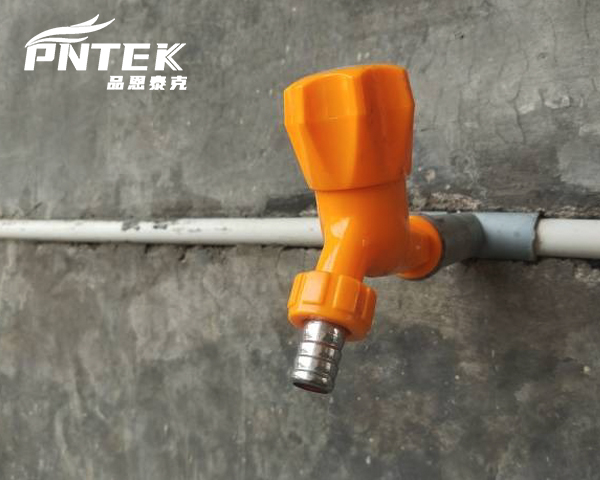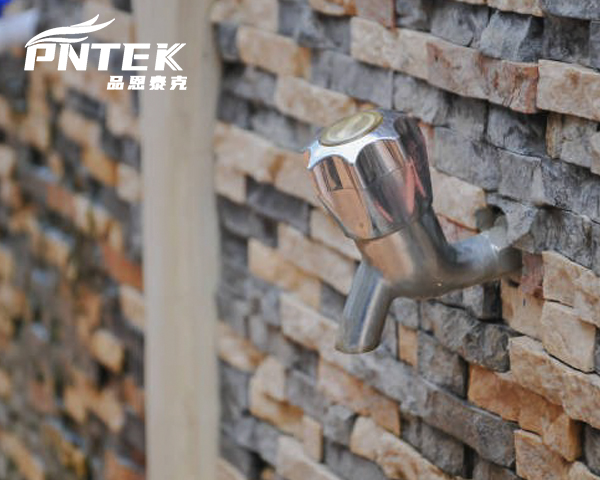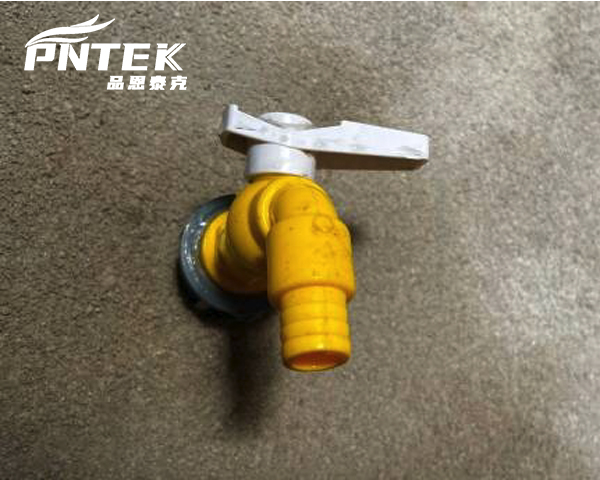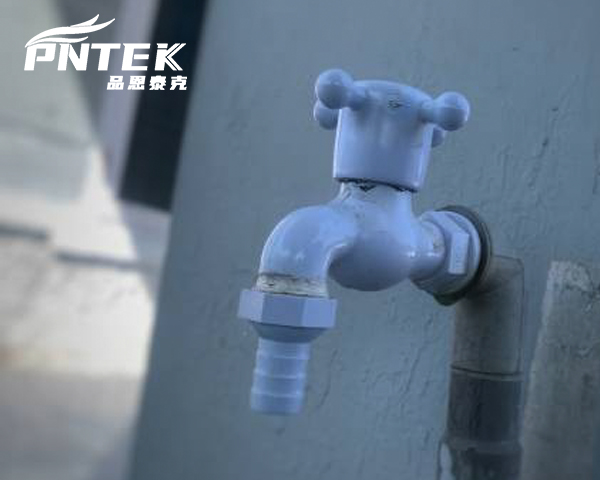You see “bib tap” on a product list and think it is just another name for a faucet. But using the wrong term could lead to ordering a product that does not fit.
A bib tap is a wall-mounted faucet, usually found outdoors, specifically designed for attaching a hose. Its main use is for gardening, cleaning cars, or general outdoor utility work.

This is a question I discuss often with my partners. Budi, a purchasing manager in Indonesia, needs to be clear on these terms for his customers. While “tap” or “faucet” are general words, a “bib tap” describes a very specific, functional product. It is a workhorse, not a decorative piece. Understanding its purpose and design is key to helping your customers find the right solution for their outdoor water needs. It is about providing the right tool for the job.
What is a bib tap used for?
Your customer needs to get water to their garden. A standard kitchen or bathroom tap is clearly not the right choice, but what exactly makes a bib tap the perfect solution?
A bib tap is used for any task that requires a hose connection outdoors. It provides a simple, reliable point to access water for gardening, washing down patios, or filling buckets.

The primary purpose of a bib tap is pure utility. It is not designed to be elegant; it is designed to be effective. Its features are all focused on making outdoor water access as simple as possible. Think of it as the starting point for a dozen outdoor jobs. At Pntek, we design our bib taps from durable materials like PP that can withstand years of sun and rain, because we know they will be used in tough environments.
Common Applications for Bib Taps
The simple design of a bib tap makes it incredibly versatile for many different settings.
| Environment | Common Uses |
|---|---|
| Residential | Watering gardens, washing cars, cleaning driveways, filling paddling pools. |
| Commercial | Wash-down for restaurant kitchens, supplying water for window cleaners, landscape maintenance. |
| Agricultural | Filling water troughs for livestock, cleaning farm equipment, washing down barn floors. |
| Industrial | Providing a utility water point in a factory, site cleanup on construction projects. |
What is the difference between a bib tap and a normal tap?
You look at a bib tap and a kitchen tap. They both have handles and they both provide water. So what makes them so different that you cannot swap their roles?
A bib tap is wall-mounted with a downward-angled, threaded spout for a hose. A normal tap is usually deck-mounted on a sink, has an aerator for a soft stream, and focuses on style.

The difference is all about designed purpose. It is like comparing a heavy work boot to a dress shoe. Both are footwear, but you would never use one for the other’s job. The design of a bib tap is completely focused on outdoor utility, while an indoor tap is designed for ergonomics and aesthetics in a controlled environment.
Design Features Compared
Let’s break down the physical differences in a table. These details explain why each tap belongs in its specific environment.
| Feature | Bib Tap | Normal Tap (e.g., Kitchen) |
|---|---|---|
| Mounting | Wall-mounted, connects to a horizontal pipe. | Deck-mounted, connects to vertical pipes. |
| Spout Design | Angled downward for bucket clearance. | Arched or straight for sink access. |
| Spout End | Threaded to securely attach a hose. | Has an aerator for a soft, splash-free stream. |
| Material Focus | Durability (PP, rough brass) to resist weather. | Aesthetics (polished chrome, stainless steel). |
| Primary Use | Outdoor utility work with high flow. | Indoor domestic tasks like washing hands/dishes. |
The threaded spout is the most critical difference. It allows for a secure, water-tight connection to a hose, which is something a normal tap’s aerator can never provide.
What are the advantages of a bib tap?
You are deciding which faucet to install on an outside wall. You need something that will last for years and will not cause problems like leaks or corrosion.
The main advantages of a bib tap are durability, simple functionality, and a dedicated hose connection. They are built to resist weather and provide a reliable water source without any fuss.

When selecting a product for an outdoor application, the advantages must be practical. A bib tap shines in this area. It solves specific outdoor problems better than any other type of faucet. As a manufacturer, I focus on these advantages to deliver real value. For a climate like Indonesia’s, our corrosion-proof plastic bib taps offer a significant benefit over traditional metal ones that can degrade in the humidity.
Key Benefits for Users
Here are the core reasons why a bib tap is the superior choice for outdoor use:
- Secure Hose Connection: The built-in threads are the main advantage. They allow a user to screw a hose on tightly, preventing it from popping off under pressure and eliminating messy leaks.
- Excellent Durability: Bib taps are made from robust materials. Our Pntek bib taps use high-grade Polypropylene (PP), which has a huge advantage over metal: it cannot rust or corrode. It is also UV-stabilized to stand up to direct sunlight for years.
- Simple & Reliable Mechanism: The internal design is usually very simple, often using a washer or a simple ball valve. With fewer complex parts, there is less that can go wrong, leading to a long and maintenance-free service life.
- Cost-Effective: Because they are designed for utility, not high fashion, bib taps are very affordable. They provide essential functionality at a very low cost.
Where are bib taps commonly fitted?
You have decided to install a bib tap. Now you have to choose the best location. Placing it in the wrong spot can make it hard to use or even a tripping hazard.
Bib taps are almost always fitted to the exterior walls of a building. Common locations include gardens, garages, and commercial building perimeters for easy access with a hose.

Strategic placement is key to making a bib tap useful. The goal is to place it where you need water most, ensuring your hose can easily reach all desired areas. Think about the path of the hose and the user’s convenience.
Strategic Placement Locations
Thinking about where the end-user will need water helps determine the best spot. For my partner Budi’s customers, who supply to new housing developments, planning these locations is part of good design.
| Location | Purpose | Installation Tip |
|---|---|---|
| Backyard/Garden | Watering plants, lawn, and cleaning the patio. | Place it at a comfortable height, about 50 cm (20 in) off the ground, to make connecting the hose easy. |
| Front Driveway/Garage | Washing cars and cleaning the driveway. | Install it on a wall near the front of the house or inside the garage for easy access to the vehicle. |
| Commercial Building | Landscape care and window/building washing. | Install one tap every 30-50 meters around the perimeter. Use lockable models to prevent unauthorized use. |
| Utility/Basement | For filling mop buckets or connecting a piece of equipment. | Mount it over a utility sink or floor drain to manage any spills. |
Properly placing a bib tap makes it a valuable asset to any property. It turns a simple plumbing part into a powerful tool for maintenance and enjoyment.
Conclusion
A bib tap is the purpose-built solution for outdoor water needs. Its durable, weather-resistant design and threaded spout make it the essential, reliable choice for gardens, garages, and utility applications everywhere.
Post time: Sep-19-2025




